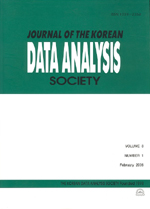자본금과 대출공급 관계에 미치는 은행 유동성 조달 수준의 차별적 영향
Differential Effect of Bank Liquidity Funding Level on the Relationship between Capital and Loan Supply
- 한국자료분석학회
- Journal of The Korean Data Analysis Society (JKDAS)
- Vol.23 No.1
-
2021.02423 - 434 (12 pages)
-
DOI : 10.37727/jkdas.2021.23.1.423
- 59

본 연구는 은행업 연구에서 상반된 연구결과로 쟁점화된 자본금과 대출공급 증가 사이에 관련성이 개별은행의 유동성 조달수준에 따라 차별적 영향을 받는다는 최근 선행연구에 주목했다. Thornton, Tommaso(2019)는 자본금과 대출공급 증가간 정(+)의 관계의 경우 개별은행의 유동성 조달수준에 의해 강화된다는 주장이다. 반면, Dang(2019)은 개별은행의 유동성 조달수준이 대출 공급에 기여함에도 자본금은 대출공급 증가에 부정적 영향을 미친다는 입장이다. 본 연구는 상반된 최근 연구결과를 확인하기 위해 국내 은행 대출을 중소기업대출, 주택담보대출로 각각 구분해 실증분석 하였다. 해당 연구결과는 다음과 같이 요약된다. 첫째, 중소기업 및 주택담보대출은 모두 자본금, 유동성 조달수준에 각각 부(-), 정(+)의 영향을 받는다. 주택담보대출에 한해 자본금과 대출공급간 부(-)의 관계가 개별은행의 유동성 조달수준에 차별적 영향을 받았다. 둘째, 중소기업대출성장은 이자수익성이 높을 때 이루어지며, 주택담보대출은 기타 부채를 통한 자금 조달역량이 양호할 경우 증가하는 것으로 나타났다. 결론적으로 중소기업대출 공급확대를 위해 서는 개별은행의 높은 유동성 조달수준이라는 재무적 특성보다 자본규제 완화조치가 필요하다.
This study pays attention to the previous studies arguing that the controversial relationship between capital and the growth of loan supply ascribed to different research results is depending on the liquidity funding. Thornton and Tommaso (2019) insisted that the positive relationship between capital and the loan growth is reinforced by liquidity funding. On the other hand, Dang(2019) asserted that there is negative relationship between capital and loan growth even though liquidity funding of each bank contributes to loan supply. Accordingly, this study did empirical research to the growths of small and medium sized enterprise (SME) loan and of housing loan in order to confirm the directly-opposed argument of recent studies. Main results are as follows. First, the growths of SME loan and of housing loan are negatively or positively influenced by capital or liquidity funding, respectively. As far as housing loan is concerned, the relationship between capital and loan growth is differently affected by liquidity funding level. Second, SME loan is grown when interest margin profit is high, and housing loan is increased when financing capability through short-term liability except for deposit financing is competent. As a concluding remark, alleviation of capital regulation, not enhancing each bank’s liquidity funding level, is needed in order to increase the SME loan supply.
1. 서론
2. 이론적 배경
3. 데이터 및 모형설계
4. 실증분석 결과
5. 결론
References
(0)
(0)